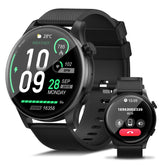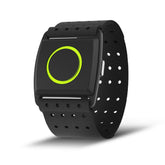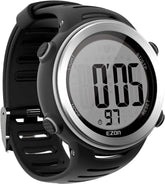Unleash Your Inner Sprinter: Speed Training with Heart Rate Monitors
Transform your running speed with science-backed strategies using heart rate monitors. This guide reveals how to leverage heart rate zones for explosive sprints and interval training, turning casual runners into speed demons. Discover optimal intensity levels, training protocols, and recovery tactics—all guided by real-time heart rate data.
1. The Science of Speed: Heart Rate Zones for Sprinters
A. Defining Heart Rate Zones for Speed
| Zone | % of Max Heart Rate | Training Effect | Ideal for |
|---|---|---|---|
| 4 | 80–90% | Lactate threshold development | Tempo runs |
| 5 | 90–100% | Anaerobic power & speed bursts | Sprints & interval training |
| Recovery | <60% | Active rest & muscle repair | Cooldowns & recovery days |
B. Why Heart Rate Monitoring Matters
- Precision Training: Avoid overtraining (HR >95% MHR for too long) or undertraining (HR <80% for speed work).
- Study Insight: Sprinters who train in Zone 5 show 15% higher peak power output than those relying on "feel" (Journal of Sports Science).
2. Heart Rate Monitors: Your Speed Training Command Center
A. Key Features for Sprinters
- Real-Time HR Alerts: Set custom vibrations for HR zones (e.g., alert when dropping below 85% MHR during intervals).
- HRV (Heart Rate Variability) Tracking: Monitor recovery—low HRV (<40) signals need for rest before speed sessions.
- GPS + HR Sync: Models like EZON Focus R7 link pace to heart rate for precise interval analysis.
3. Speed Training Protocols: From 100m to 10K
A. Sprint Interval Training (SIT) Protocol
-
Warm-Up (10 mins):
- Light jog + dynamic stretches, keep HR <65% MHR.
-
Main Set:
- 6–8 x 100m sprints at 95–100% MHR, 2-min rest (HR should drop to 70% MHR between sets).
-
Cool-Down:
- 5-min walk + static stretches, use heart rate monitor to confirm HR <60% MHR.
B. Lactate Threshold Training (400m Intervals)
- Workout: 8 x 400m at 85–90% MHR, 90-sec rest (HR should recover to 75% MHR before next rep).
- Tech Tip: Use watch alarms to enforce rest periods—short rest = higher lactate adaptation.
4. Recovery Strategies Guided by Heart Rate Data
A. Post-Speed Work Recovery
- Active Recovery: 15-min easy jog at <60% MHR within 30 mins of finishing to flush lactate.
- HRV-Driven Rest Days: If morning HRV is 10% below baseline, swap speed work for yoga or swimming.
B. Nutrition Timing
- Post-Sprint Fuel: Consume 20g protein + 40g carbs within 20 mins (e.g., pea protein shake + banana) when HR drops to 65% MHR (signals recovery onset).
5. Common Speed Training Mistakes to Avoid
-
Overtraining in Zone 5:
- Solution: Limit Zone 5 work to 15–20 mins/week; use heart rate monitor to track cumulative high-intensity time.
-
Ignoring Recovery HR:
- Solution: Measure HR 1 min after sprints—slow recovery (HR >90 BPM) indicates poor fitness or fatigue.
-
Inconsistent HR Zone Execution:
- Solution: Program watch to display real-time HR % during intervals—stay within ±2% of target zone.
6. FAQs: Heart Rate Monitors for Speed Training
Q: How to calculate max heart rate (MHR)?
- Use the formula: MHR = 220 - age, or better yet, perform a field test (all-out 5K to estimate).
Q: Can I use a chest strap instead of wrist HR?
- Chest straps (e.g., Polar H10) offer higher accuracy for sprints, but wrist-based monitors like EZON Focus R7 PB are convenient for most athletes.
Q: How often to do speed training?
- 1–2x/week for beginners, 2–3x/week for advanced runners, always with 48 hours rest between sessions.
Sprint Smarter, Not Harder: Data-Driven Speed Gains
Unlocking your inner sprinter requires more than raw effort—it demands precision. By using heart rate monitors to target heart rate zones for sprints and intervals, you’ll maximize power output, minimize overtraining, and accelerate performance gains.
Lace up, strap on your monitor, and let data guide your speed journey. The track is yours—now run with scientific precision and watch your times drop.
EZON Watch: Precision Training for Speed Athletes
https://ezonwatch.com
https://ezonwatch.com









